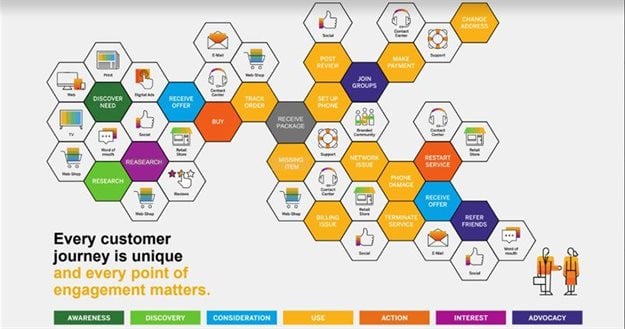
Top stories






More news






HR & Management
Kickstart your career: 7 steps to get job-ready in 2026








We no longer have to wonder what type of experience our customers have with our brands, as they're all too willing to tell us. That's why Emert began his presentation with a reminder that we are living in a feedback economy, which means true business success can no longer be measured on just a transactional basis, as it also involves attitudinal factors.
But how do you close the gap between the customer expectation, based on the promise your brand has made, and reality of the experience they receive?
Emert says the customer experience gap is a combination of the following:
In addition, 90% of CEOs believe they are delivering a superior experience, while just 19% of customers agree.
Emert says we need to close the gap to connect the journey – the below video explains the context well:
It’s essentially about acknowledging that customer journeys are unique, fragmented and non-linear, and that each customer journey should be about collecting data for the full buyer’s circle, from every single point of interaction the customer has with the brand – both as operational and experience data.
Emert then shared examples of operational (O) and experience (X) data, stating that operational data is the hard data of what’s actually happening. It’s the real sales numbers on the financials, as well as other hard-and-true figures like your win rate, inventory turnover, share of wallet, profitability, cart abandonment, and core resolution data.
On the other hand is experience data, which is why it’s happening, and essentially what’s driving that customer sentiment. This includes such ‘former intangibles’ as customer satisfaction, purchase intent, likelihood to churn, customer effort score, Net Promoter Score (NPS) and customer lifetime value.
Emert says that taking the combination of what’s happening and why it’s happening is important to get a single-view of the customer.

All too many times, the place we get this wrong is deciding how to close the loop, especially if customers are sharing that the experience was not a good one? What do you do with that information?
Emert says the key here is being able to ingest that information back into your operational system.
Often, this means send out surveys asking customers for their feedback and to rate the experience, then parse that information back into the CRM. That way, sales reps are better prepared, prior to their next engagement with the customer. It was seem obvious, but Emert says it’s a step many brands miss.
For service, we create tickets to escalate and deal with problems timeously, but these should also be logged in the CRM for a complete transactional history.
It’s about collecting the experience data and combining it with the operational data, then bringing it back into the system of record to really close the loop and offer a complete snapshot of your performance.
Watch the below case study to find out how Porsche put this in action:
Emert concluded with tips to become a leader in the experience economy:
It all boils down to delivering on the moments that matter most to your customers. This means a three-pronged approach:
1. Listen, by collecting experience data from customers and employees at every meaningful touchpoint
2. Understand operational root causes. Spot hidden trends and automatically make recommendations on what to do about it.
3. Act to close experience gaps. Take both X and O data into the operational systems and business processes to create engaging experience.
Proof that delivering good customer experience really requires multi-faceted thinking and acting behind the scenes.
Watch for my further coverage of the Kantar #CustomerAdvantage sessions on site, and follow Kantar, SAP Africa and Emert on Twitter for the latest updates.
